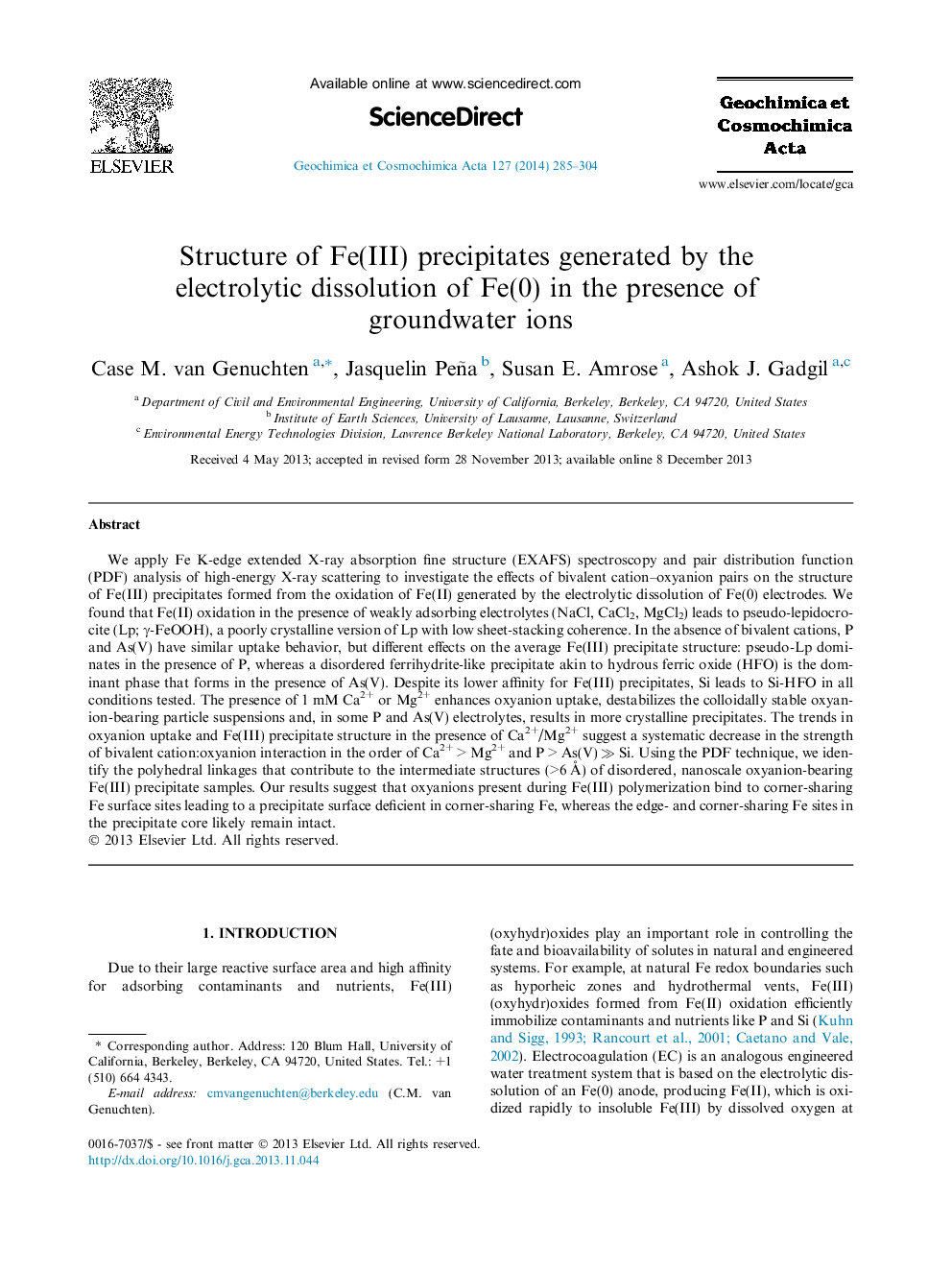| کد مقاله | کد نشریه | سال انتشار | مقاله انگلیسی | نسخه تمام متن |
|---|---|---|---|---|
| 4702149 | 1638030 | 2014 | 20 صفحه PDF | دانلود رایگان |

We apply Fe K-edge extended X-ray absorption fine structure (EXAFS) spectroscopy and pair distribution function (PDF) analysis of high-energy X-ray scattering to investigate the effects of bivalent cation–oxyanion pairs on the structure of Fe(III) precipitates formed from the oxidation of Fe(II) generated by the electrolytic dissolution of Fe(0) electrodes. We found that Fe(II) oxidation in the presence of weakly adsorbing electrolytes (NaCl, CaCl2, MgCl2) leads to pseudo-lepidocrocite (Lp; γ-FeOOH), a poorly crystalline version of Lp with low sheet-stacking coherence. In the absence of bivalent cations, P and As(V) have similar uptake behavior, but different effects on the average Fe(III) precipitate structure: pseudo-Lp dominates in the presence of P, whereas a disordered ferrihydrite-like precipitate akin to hydrous ferric oxide (HFO) is the dominant phase that forms in the presence of As(V). Despite its lower affinity for Fe(III) precipitates, Si leads to Si-HFO in all conditions tested. The presence of 1 mM Ca2+ or Mg2+ enhances oxyanion uptake, destabilizes the colloidally stable oxyanion-bearing particle suspensions and, in some P and As(V) electrolytes, results in more crystalline precipitates. The trends in oxyanion uptake and Fe(III) precipitate structure in the presence of Ca2+/Mg2+ suggest a systematic decrease in the strength of bivalent cation:oxyanion interaction in the order of Ca2+ > Mg2+ and P > As(V) ≫ Si. Using the PDF technique, we identify the polyhedral linkages that contribute to the intermediate structures (>6 Å) of disordered, nanoscale oxyanion-bearing Fe(III) precipitate samples. Our results suggest that oxyanions present during Fe(III) polymerization bind to corner-sharing Fe surface sites leading to a precipitate surface deficient in corner-sharing Fe, whereas the edge- and corner-sharing Fe sites in the precipitate core likely remain intact.
Journal: Geochimica et Cosmochimica Acta - Volume 127, 15 February 2014, Pages 285–304